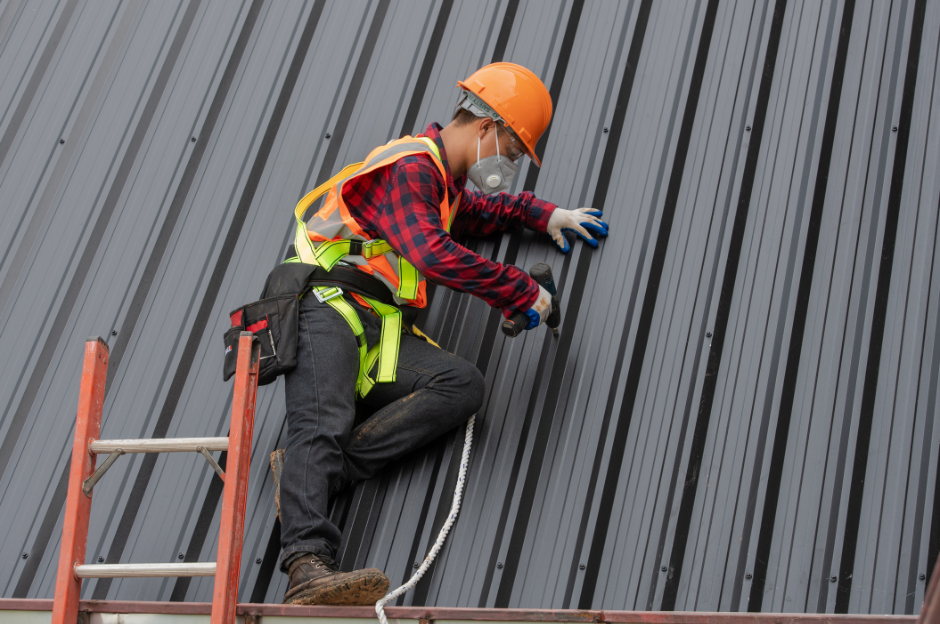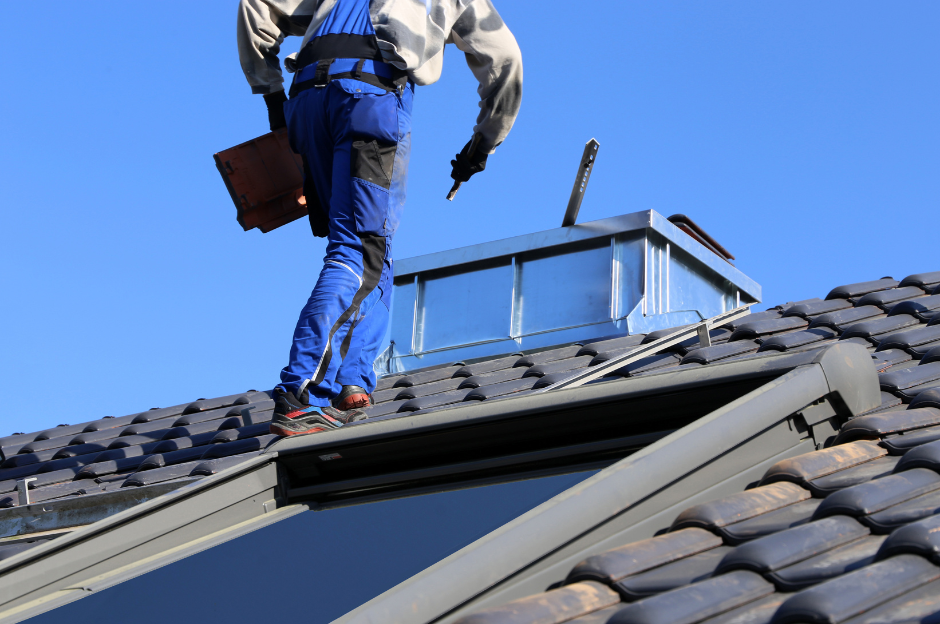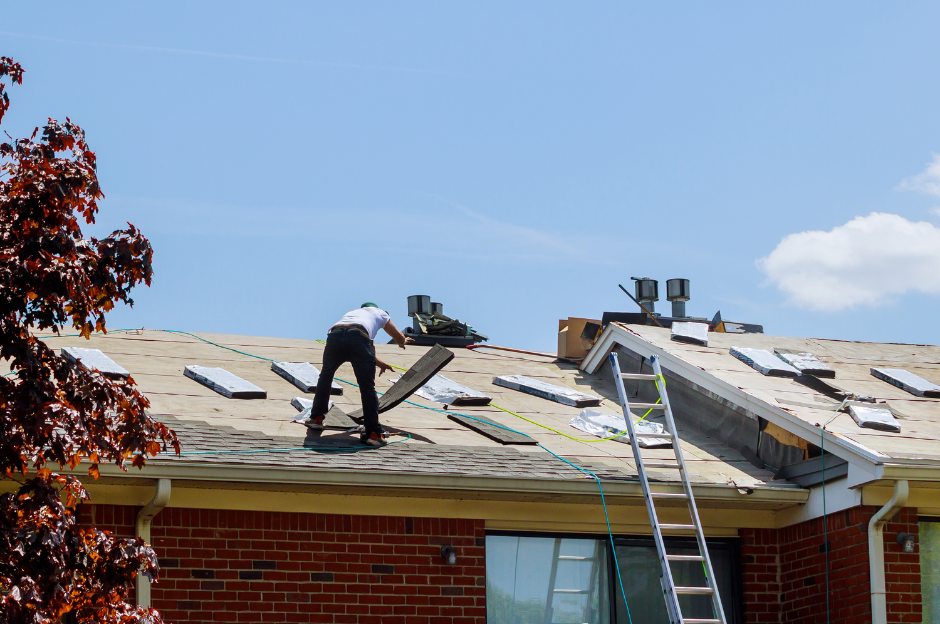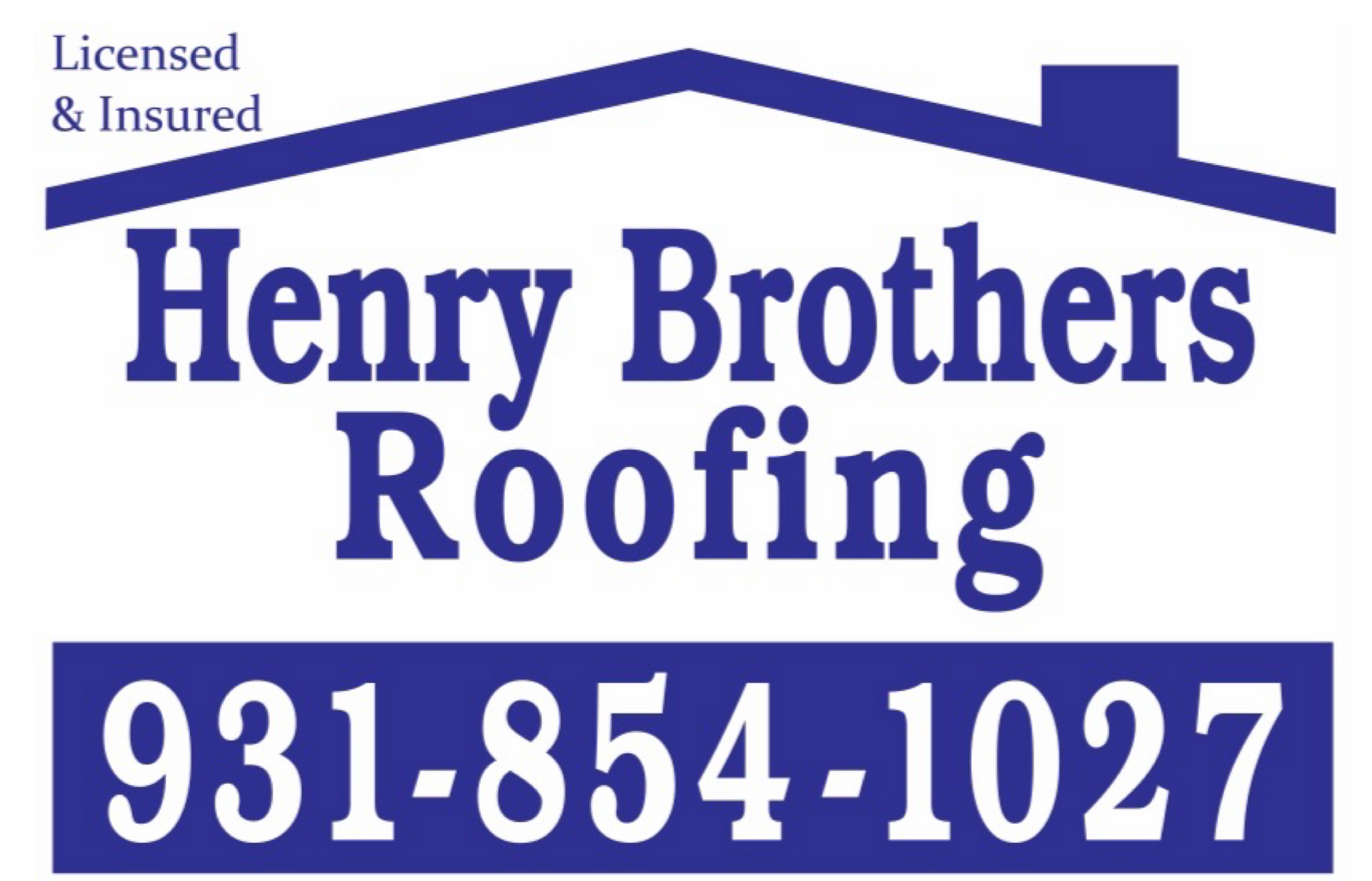Metal Roofing Solutions: Durability Meets Design
May 31, 2024

When it comes to selecting a roofing material for your home or commercial building, you want something that combines durability, aesthetics, and cost-effectiveness. Metal roofing solutions offer an excellent blend of these qualities, making them an increasingly popular choice among homeowners and builders. In this comprehensive blog post, we will explore the various aspects of metal roofing, including its benefits, types, design options, installation processes, and maintenance tips. By the end of this article, you will have a thorough understanding of why metal roofing might be the ideal solution for your next roofing project.
The Benefits of Metal Roofing
Durability
One of the most significant advantages of metal roofing is its durability. Metal roofs can withstand extreme weather conditions, including heavy rain, snow, high winds, and even hail. Unlike traditional asphalt shingles, which can degrade over time, metal roofs are resistant to cracking, shrinking, and eroding. Many metal roofs come with warranties of 40 to 70 years, far outlasting other roofing materials.
Longevity
Metal roofing is known for its long lifespan. Properly installed and maintained metal roofs can last for decades, often exceeding 50 years. This longevity means that homeowners may never need to replace their roof again, making metal roofing a cost-effective solution in the long run.
Energy Efficiency
Metal roofs are highly energy-efficient. They reflect solar radiant heat, which can reduce cooling costs by 10-25%. Many metal roofing systems also have coatings that provide additional energy efficiency benefits. By reducing the demand for air conditioning, metal roofs can lower your energy bills and contribute to a more sustainable environment.
Fire Resistance
Metal roofs are non-combustible and have a Class A fire rating, the highest possible. This makes them an excellent choice for areas prone to wildfires or for buildings requiring high levels of fire protection.
Environmental Impact
Metal roofing is an environmentally friendly option. Most metal roofs are made from recycled materials, and at the end of their life, they are 100% recyclable. Additionally, the longevity and energy efficiency of metal roofs reduce the overall environmental impact compared to other roofing materials.
Types of Metal Roofing
Metal roofing comes in a variety of materials, each with its unique benefits and aesthetics:
Steel Roofing
Steel is the most common metal roofing material, known for its strength and durability. It is usually coated with zinc (galvanized steel) or a zinc-aluminum alloy (galvalume steel) to prevent rust and corrosion. Steel roofing can be painted in various colors to match the design of your building.
Aluminum Roofing
Aluminum is lightweight and highly resistant to corrosion, making it an excellent choice for coastal areas. It does not require a protective coating, but it can be painted for aesthetic purposes. Aluminum roofing is also highly reflective, contributing to its energy efficiency.
Copper Roofing
Copper roofing is renowned for its beauty and longevity. It develops a natural patina over time, which acts as a protective layer and gives the roof a distinctive green color. Copper is one of the most durable metal roofing options but also one of the most expensive.
Zinc Roofing
Zinc is another highly durable and long-lasting metal roofing material. It forms a protective patina that can self-heal scratches and minor damage. Zinc roofing is also highly recyclable and environmentally friendly, making it a popular choice for sustainable building projects.
Tin Roofing
Although less common today, tin roofing is still used in some areas. Modern tin roofs are typically made from rolled steel coated with tin to prevent rust. Tin roofing is lightweight and provides good protection against the elements.
Design Options for Metal Roofing
Metal roofing offers a wide range of design options to suit various architectural styles and personal preferences:
Standing Seam Metal Roofing
Standing seam metal roofing features vertical panels with raised seams that interlock to form a watertight seal. This design provides a sleek, modern appearance and excellent weather resistance. Standing seam roofs are ideal for both residential and commercial buildings.
Metal Shingles
Metal shingles mimic the appearance of traditional roofing materials like asphalt, wood, or slate but with the added benefits of metal. They are available in various shapes, colors, and textures, allowing for versatile design possibilities.
Metal Tiles
Metal tiles offer the aesthetic appeal of traditional tile roofing with the durability and lightweight nature of metal. They are available in styles that replicate clay, concrete, or slate tiles, providing a high-end look without the associated weight and maintenance issues.
Corrugated Metal Roofing
Corrugated metal roofing features wavy or ribbed panels, offering a rustic or industrial look. It is commonly used for agricultural buildings, barns, and outbuildings but can also be a stylish choice for modern residential designs.
Custom Profiles
Many manufacturers offer custom profiles and designs for metal roofing, allowing for unique architectural statements. Whether you prefer a traditional look or a contemporary style, there are metal roofing options to match your vision.
Installation of Metal Roofing
Proper installation is crucial to maximizing the benefits of metal roofing. Here are the key steps involved in the installation process:
Preparation
The existing roof must be inspected and repaired if necessary before installing a metal roof. In some cases, the metal roof can be installed over the existing roof, reducing the need for a complete tear-off.
Measuring and Cutting
Accurate measurements are essential to ensure a proper fit. Metal panels or shingles are cut to size using specialized tools. Precise cutting helps prevent gaps and overlaps that could compromise the roof's integrity.
Laying Underlayment
An underlayment is installed to provide an additional layer of protection against moisture. This is especially important in preventing leaks and enhancing the roof's insulation properties.
Installing Metal Panels or Shingles
Metal panels or shingles are installed starting from the bottom edge of the roof and working upwards. They are secured using fasteners, clips, or nails, depending on the roofing system. Proper alignment and spacing are crucial to ensure a watertight seal and an even appearance.
Sealing and Flashing
Seams, edges, and penetrations (such as chimneys and vents) are sealed and flashed to prevent water infiltration. High-quality sealants and flashing materials help ensure the roof remains watertight and durable.
Final Inspection
A thorough inspection is conducted to ensure all components are properly installed and secured. Any necessary adjustments or repairs are made before completing the installation.
Maintenance Tips for Metal Roofing
While metal roofs require less maintenance than many other roofing materials, regular upkeep is essential to ensure their longevity and performance:
Regular Inspections
Inspect your metal roof at least twice a year and after severe weather events. Look for signs of damage, such as loose or missing fasteners, rust spots, and damaged panels or shingles.
Cleaning
Keep your metal roof clean by removing debris, such as leaves and branches, that can trap moisture and cause corrosion. Use a soft-bristle brush or low-pressure washer to clean the surface without damaging the protective coating.
Gutter Maintenance
Clean your gutters regularly to prevent water backup and ensure proper drainage. Clogged gutters can cause water to pool on the roof, leading to leaks and damage.
Addressing Rust and Corrosion
If you notice any signs of rust or corrosion, address them promptly. Remove rust spots using a wire brush and apply a rust-inhibiting primer and paint to protect the metal.
Repairing Damage
Repair any damage to panels, shingles, or flashing as soon as possible to prevent leaks and further deterioration. Small issues can quickly escalate if left unattended.
Professional Maintenance
Consider scheduling regular maintenance with a professional roofing contractor. They can perform thorough inspections, cleanings, and repairs to keep your metal roof in optimal condition.
Henry Brothers Blog

Multi-family buildings pose unique challenges for roofing—requiring durable, efficient, and cost-effective solutions that serve multiple households simultaneously. Selecting the right system and partner can significantly impact long-term maintenance and energy bills. Common Roofing Challenges in Multi-Family Properties Large surface areas Multiple penetrations (vents, HVAC units) Noise and disruption during installation High foot traffic for maintenance Energy efficiency Efficient Roofing Materials TPO (Thermoplastic Polyolefin): Lightweight, reflective, and energy-efficient. Ideal for flat or low-slope roofs. Modified Bitumen: Offers durability and weather resistance. Works well for larger structures. Metal Roofing: Long-lasting and low-maintenance. Higher upfront costs but excellent ROI. Asphalt Shingles: Budget-friendly and easy to repair. Better for pitched multi-family homes. Affordability Strategies Bulk Purchasing Discounts: Roofers often offer lower rates for large-scale projects. Energy Rebates and Tax Credits: Cool roofing materials may qualify for incentives. Roof Coatings: Extend lifespan and defer full replacements. Preventive Maintenance Plans: Regular inspections reduce major repair costs. Partnering with the Right Contractor Choose a roofing contractor experienced in multi-family dwellings. Look for: References from similar projects Warranty offerings Insurance and licensing Clear timelines and communication protocols

Your roof is one of the most defining features of your home’s architecture. A well-designed roof complements the style, era, and character of your house, enhancing both curb appeal and value. Whether you own a modern home, a Victorian masterpiece, or a Mediterranean villa, choosing the right roofing materials and design is essential. This article explores custom roofing solutions for different architectural styles, ensuring your roof is both aesthetic and functional. 1. Why Custom Roofing Matters A one-size-fits-all approach doesn’t work for roofing. Here's why customization is key: 🏡 Preserves Architectural Integrity The roof should match the home's era and design. A poorly chosen roof can clash with the architecture and reduce property value. 💰 Boosts Home Value & Curb Appeal A well-matched roof enhances visual appeal, making your home stand out. Homebuyers prefer houses with roofs that fit the overall design. 🌦 Enhances Durability & Efficiency Custom roofing accounts for climate, slope, and insulation. Choosing the right materials ensures longer roof life and energy efficiency. 2. Best Roofing Materials for Different Architectural Styles 🏗 Modern & Contemporary Homes Modern architecture focuses on clean lines, minimalism, and energy efficiency. Best Roofing Options: ✅ Flat Roofs – Achieve a sleek, contemporary look. ✅ Metal Roofing – Durable and complements modern aesthetics. ✅ Green Roofs – Eco-friendly and visually striking. ✅ Solar Panels – Integrate renewable energy solutions. 🏰 Victorian & Gothic Revival Homes These homes have steep-pitched roofs, turrets, and elaborate detailing. Best Roofing Options: ✅ Slate Tiles – Classic, long-lasting, and historically accurate. ✅ Wood Shingles – Adds charm and natural beauty. ✅ Decorative Metal Accents – Enhances ornate Victorian designs. 🏝 Mediterranean & Spanish-Style Homes Inspired by European coastal homes, these feature stucco walls and curved archways. Best Roofing Options: ✅ Clay or Terracotta Tiles – Traditional, weather-resistant, and elegant. ✅ Concrete Tiles – Durable and available in various textures and colors. ✅ Synthetic Spanish Tiles – Modern, lightweight alternatives with classic appeal. 🌲 Rustic & Cabin-Style Homes These homes emphasize natural materials and a cozy aesthetic. Best Roofing Options: ✅ Wood Shakes – Blends seamlessly with wooded surroundings. ✅ Metal Roofing (Rustic Finish) – Durable with a weathered, natural look. ✅ Green Roofs – Enhances sustainability and insulation. 🏡 Colonial & Traditional Homes These timeless homes focus on symmetry and classic proportions. Best Roofing Options: ✅ Asphalt Shingles – Affordable and available in classic shades. ✅ Slate Roofing – Elegant and historically accurate. ✅ Copper or Metal Accents – Enhances historic charm. 🏛 Mid-Century Modern Homes This style features low-sloped roofs, large windows, and open spaces. Best Roofing Options: ✅ Flat or Low-Slope Roofs – Clean, minimalistic aesthetic. ✅ Rubber or Membrane Roofing – Ideal for low-pitch roofs. ✅ Green or Living Roofs – Complements eco-conscious designs. 🏰 Tudor-Style Homes Tudor homes have steeply pitched gables and decorative half-timbering. Best Roofing Options: ✅ Wood or Synthetic Shake Shingles – Traditional and authentic. ✅ Slate Roofing – Enhances historic charm and durability. ✅ Architectural Asphalt Shingles – Mimics wood or slate at a lower cost. 3. Custom Roofing Features to Consider Beyond materials, adding customized elements can elevate your roof’s design. 🔹 Roof Color & Texture Dark roofs enhance historic and formal homes. Light-colored roofs reflect heat, ideal for warm climates. Textured materials (slate, shakes) add visual depth. 🏠 Roof Shape & Pitch Steep roofs fit Gothic and Victorian styles. Flat or low-sloped roofs match modern homes. Custom pitches enhance energy efficiency and durability. 🔆 Skylights & Roof Windows Adds natural light and enhances ventilation. Works well in modern, contemporary, and rustic homes. 🌞 Solar Roofing & Smart Technology Solar shingles blend seamlessly into modern & eco-friendly homes. Smart roofing systems adjust ventilation & insulation automatically. 4. Custom Roofing: How to Get Started 1️⃣ Consult a Roofing Expert Work with an architect or contractor specializing in custom roofs. Ensure they understand historical accuracy and climate considerations. 2️⃣ Choose High-Quality Materials Invest in durability, energy efficiency, and aesthetics. Select roofing that aligns with your home’s style and longevity needs. 3️⃣ Consider Long-Term Costs & ROI Some materials have higher upfront costs but last longer and increase home value. Energy-efficient options can reduce heating and cooling expenses. 4️⃣ Verify Local Building Codes Some roofing styles require special permits. Ensure compliance with HOA guidelines and historical district regulations.


